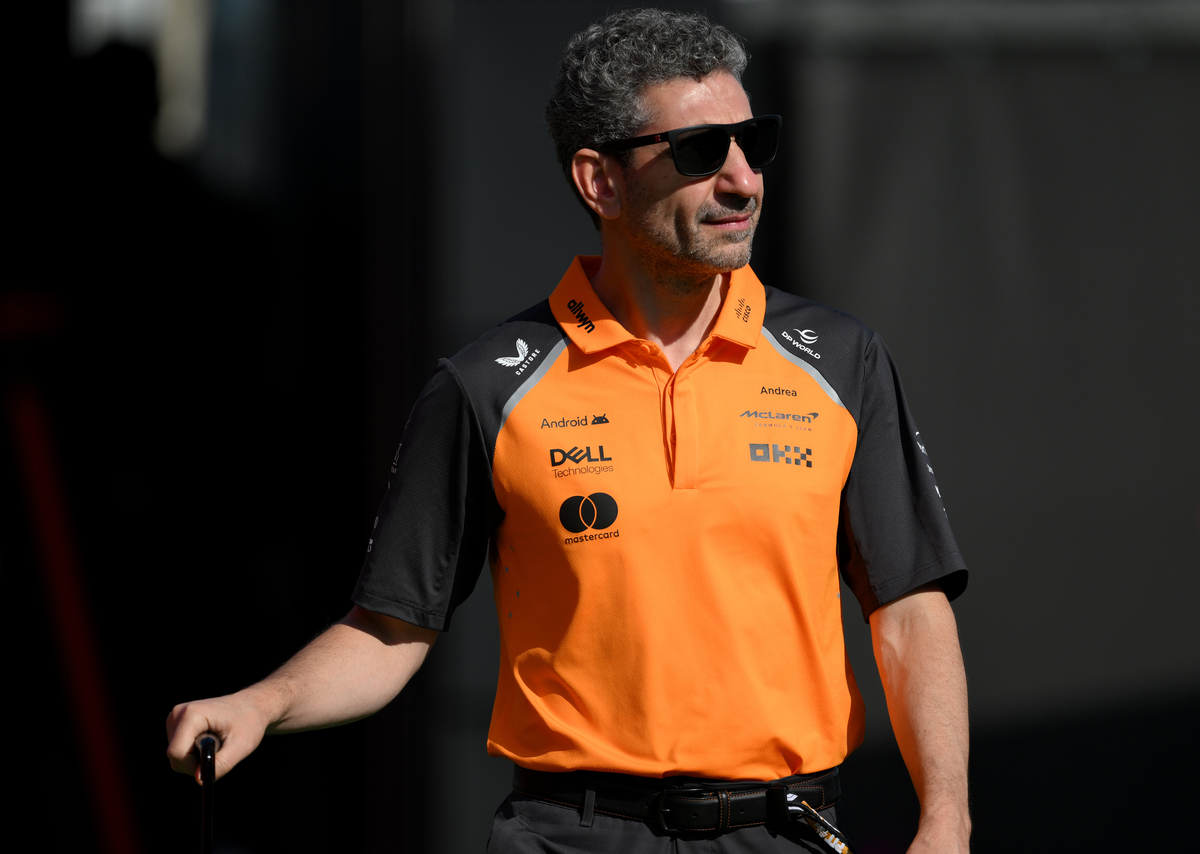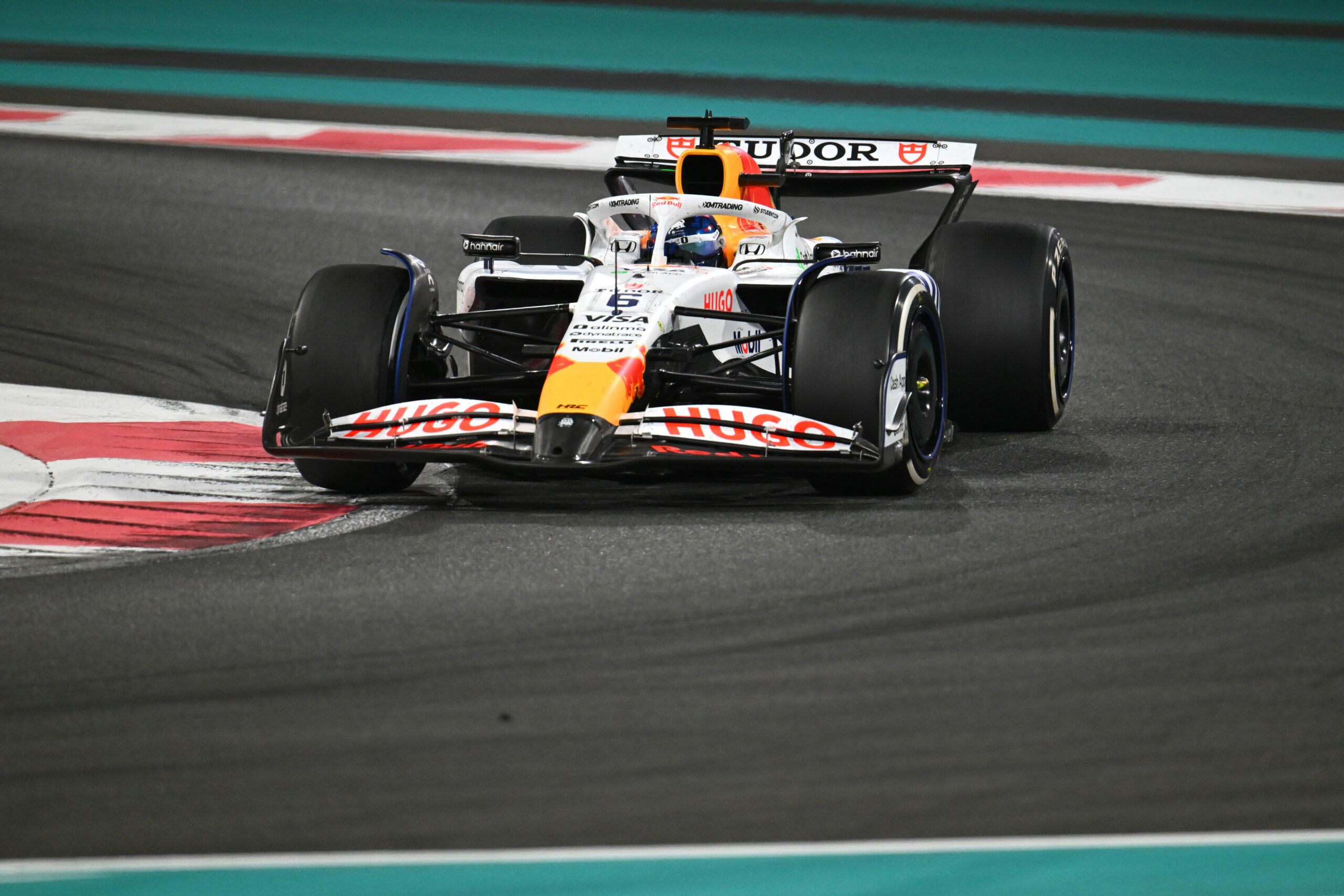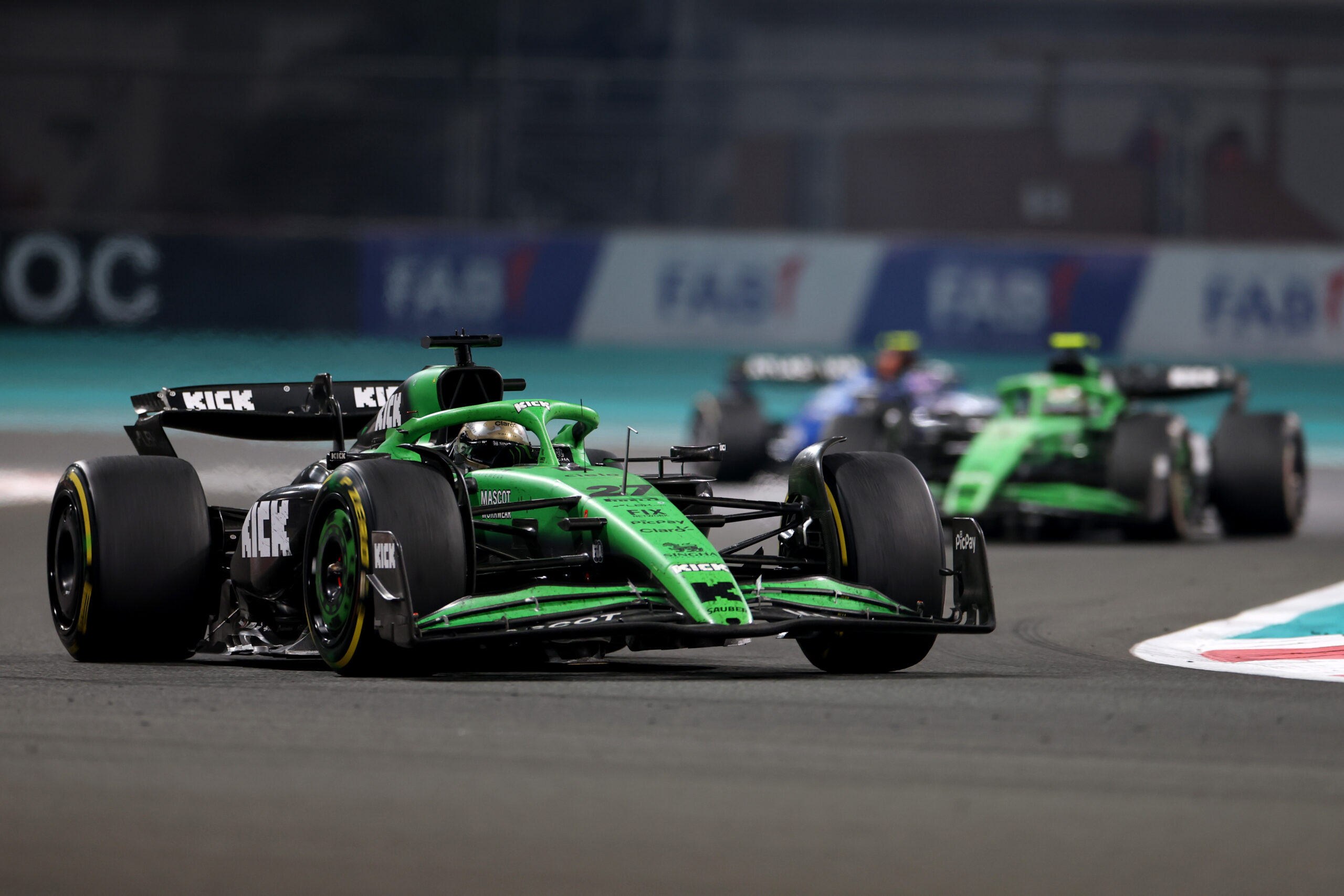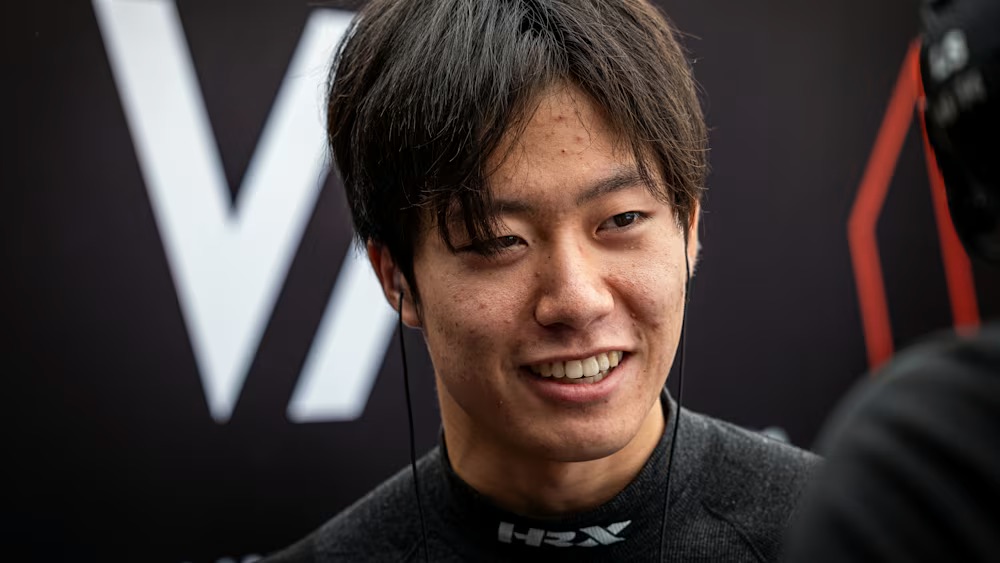Team principal Andrea Stella has shared his insights into the strategic calls that led to McLaren’s comfortable 1-2 finish and Max Verstappen’s aggressive 3-stop approach at the F1 Spanish GP.
With no team attempting a one-stopper on Sunday, the Woking-based outfit went into the race with a fresh set of all three tyre compounds. Starting from the front row, both Oscar Piastri and Lando Norris bolted on a set of fresh softs for their opening stints.
While the Australian driver had a great launch from pole position, Verstappen overtook Norris into Turn 1. Although the six-time race winner managed to get his position back, the reigning world champion leapfrogged both McLaren drivers after the first round of pit stops.
As Verstappen’s aggressive 3-stop strategy generated intrigue over whether he could pose a threat to the McLaren pair in the latter stages of the race, the Safety Car triggered by Kimi Antonelli’s retirement on Lap 55 neutralised the Dutchman’s advantage.
With the Red Bull driver at a massive disadvantage on the hardest compound after the Safety Car restart, Piastri and Norris surged clear of the field on their sets of used softs and extended their leads in both championships.
Verstappen’s pace worried McLaren during their second stint
Speaking in a print media session after the race, Andrea Stella opened up about Verstappen’s competitive pace and how much threat he posed to McLaren’s 1-2 finish at the F1 Spanish GP on Sunday.
Stella admitted that McLaren were initially unbothered by Red Bull’s 3-stop strategy for Verstappen. However, he revealed that the Dutchman’s rapid pace during their second stint became a point of concern, with a potential risk of one of their drivers getting undercut.
“When we saw Verstappen going we thought it would be on a 3-stop and we thought it’s not going to be a problem because we have already overtaken him on track and we should have a decent pace advantage.
“But the reality is that he was fast. He was fast and when we went on the medium tyres in the second stint we were pushing, controlling the pace, and he was catching up very rapidly, more rapidly than we hoped for.
“At some stage we even asked our drivers if we should push more and both gave answers like ‘I’m not sure I have much more pace than this’.
“So at that stage we were a little worried that it could have been a situation more open than we thought it would be in the first stint.
“At some stage it would have also been tricky for us because we had Oscar [Piastri] and Lando [Norris] that were like 2.5 seconds apart or something. So if we needed to cover Verstappen, it would’ve been a bit of a problem with them.”
Stella appreciative of the drivers and tyre engineers for good execution

Andrea Stella further explained how Verstappen reining in his pace and Piastri finding his groove towards the end of his stint on the mediums allowed McLaren to successfully execute their remaining pit stops at the F1 Spanish GP in a sequential manner.
Additionally, the Italian commended the drivers and the tyre engineers for maximising their potential in Sunday’s race.
“But thankfully Verstappen started to tail off a bit, Oscar found quite a lot of pace at the end of the second stint, and this allowed us to go through the pit stop sequence in a controlled way.
“So I think well done to the drivers from this respect but well done to our tyre engineers and overall I think this was a good execution of today’s race.”
Stella believes a three-stopper compounds risk of running out of tyres
Asked if he was surprised by Red Bull opting against staying out with Verstappen during the Safety Car period and picking the hard tyres for his final stint at the F1 Spanish GP, Andrea Stella remarked that teams always try to capitalise on additional pit stops in races that are harsher on the tyres.
Reflecting on Red Bull’s choice of the hardest compound for Verstappen, Stella surmised that the Milton Keynes squad no longer had any soft tyres in viable condition following their aggressive 3-stop strategy.
Elaborating that their initial 2-stop strategy provided them with the option to pit for used softs or fresh hards under the Safety Car, the 54-year-old maintained that the constraint to use the hard tyres would’ve left them vulnerable at the restart as well.
“I think in a race where you have so much tyre degradation you are always incentivised to pit.
“They [Red Bull] might’ve run out of soft tyres, I’m not sure. I think if you ask the driver like would you like to stay out or pit for a hard, I’m not sure which one he would pick.
“That’s all I know about this situation but even for us staying on a 2-stop gave us definitely a tyre for a Safety Car.
“I think going on a 3-stop you run out of tyres and I’m not sure if we had another used soft available but a hard tyre at the restart is always going to be a problem.”
In terms of whether Pirelli’s tyre allocation prompted McLaren to select the 2-stop strategy, the Italian clarified, “No, we went for the 2-stop because we thought it was the fastest strategy.”
Stella maintains 2-stop was the faster strategy despite more risks
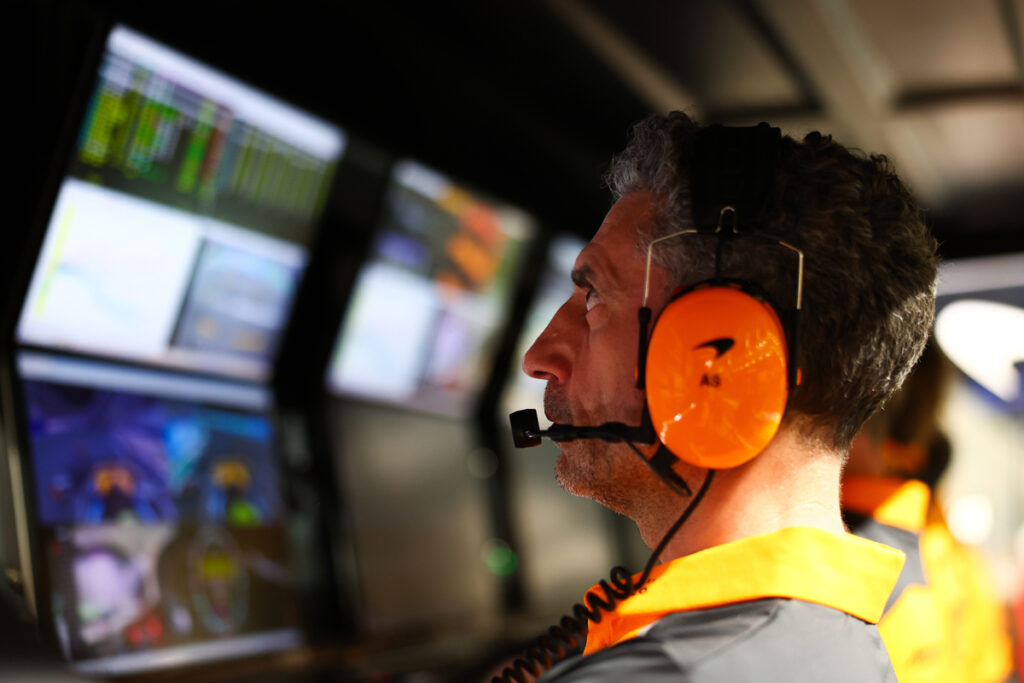
Asked if he still believes that the 2-stop was the faster strategy after witnessing Verstappen’s blistering pace during the F1 Spanish GP, Andrea Stella stood by his initial opinion. However, he conceded that there were additional risks involved with the obligation of staying on the worn-out tyres in case of higher-than-anticipated degradation.
Furthermore, the 54-year-old elaborated that a gentle introduction enabled the McLaren duo to extend the tyre lives in all their stints in comparison to Verstappen, who was ultimately forced to nurse his tyres during his third stint.
“I think a 2-stop is faster. It comes with some risks in relation to the fact that when you have such a fast three-stopper, you need to push on a 2-stop. So you need to push on long stints and sometimes it’s a little unpredictable how much your tyres will go off.
“If you look at the race trace, if you look at the times at the start of the stint, we were very careful not to push too much because if you push too much at the start of the stint then you’re gonna have some degradation at the end which ultimately is what happened with Verstappen, I think in what will have been his second or third stint, maybe the third. Like he pushed so much but then at some stage he tailed off.
“Like it’s a limited budget. You have to just decide where you use it but on a 2-stop you are much more exposed if your tyres go off. Then you have to stay on it and it’s quite brutal when they go off. So I think the 2-stop [was] faster but with some degree of risk.”
McLaren considered the 3-stop but opted against it
With regard to when the McLaren pit wall realised that Verstappen was on a 3-stop and whether they considered covering him with one of their cars, Andrea Stella stated that they became aware of Red Bull’s approach once the Dutchman cut his first stint really short.
Although Stella revealed that they had considered switching to a three-stopper for a moment during the F1 Spanish GP, McLaren ultimately decided against it because their data didn’t project the 3-stop as the faster strategy at the time.
Remarking that the Red Bull driver had pushed his tyres harder than expected, the Italian added that the McLaren duo managing to extract more performance at the end of their second stints enabled them to neutralise Verstappen’s charge and score the maximum points on Sunday.
“When he [Verstappen] stopped at the lap he stopped it was clear that it was a 3-stop. The first stop because from there with two sets it pretty much is impossible. Like it’s too suboptimal to go for a 2-stop when you stop so early.
“But for us to be honest, it didn’t change anything because we thought for a moment whether we should do the same. We decided that we shouldn’t because at the time there were no indications that we should’ve gone on a 3-stop.
“If anything, in the middle of the race, Verstappen was faster than we expected. It put us under quite a lot of pressure but our drivers at the end of the second stint found that little bit of performance that allowed us to manage the second stop, retaining the first and the second position.”

